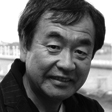
Lecture
December 9, 2013
Dans le cadre des conférences de l’UPIAV
Power of Place
Natural disasters have always directed the course of our civilizations, but the great disaster of March 11, 2011 in Japan differed from any other catastrophes since the 1755 Lisbon Earthquake. Nature was desperately forceful as never before. However “strong” or “rational” the structures built to contain it were, the tsunami flattened the Tohoku coastline in seconds. The nuclear accident that followed further revealed the inabilities of “big and strong” architecture. Confronted with radiation, concrete or steel meant nothing – the irony being that nuclear energy had emerged as part of our drive, since the Lisbon tragedy, to become bigger, stronger, and more efficient.
Now that such a process has collapsed on itself, we have to start from scratch. Even before 3/11, I was already fed up with massive concrete and steel buildings, and had begun to design a number of small works of architecture. You can build these projects on your own, with nearby materials, and be totally independent from strong powers – or rather, dependent solely on nature, and on the power of place. I sense that the whole world is now shifting toward small things. We are no longer passive creatures spoon-fed from a giant yet unreliable system. Each individual starts by building a nest for her- or himself, amassing energy on her or his own and taking advantage of their locality. A new relationship is being formed between people and place.
Kengo Kuma
The Japanese architect Kengo Kuma has taught at Columbia University and is currently a professor at the University of Tokyo, running research projects on architecture, urbanity and design. He won the Architectural Institute of Japan Award in 1997. His office employs over 150 architects in Tokyo and Paris. Kengo Kuma’s works tend to reinterpret Japanese and Asian building traditions for the 21st century. With the project “Under One Roof”, Kengo Kuma &Associates won a competition at EPFL to build new pavilions aiming to reconnect science and culture.
